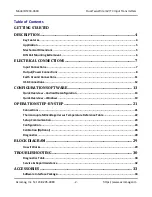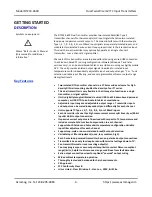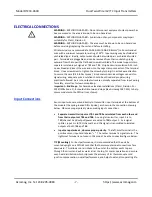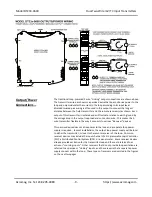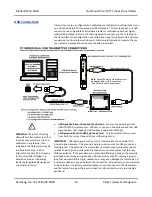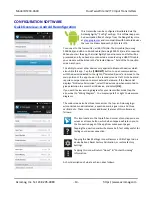
Model DT233-0600
Dual Two-Wire mV/TC Input Transmitters
Acromag, Inc. Tel: 248-295-0880
- 9 -
http://www.acromag.com
- 9 -
https://www.acromag.com
Output/Power
Connections
…
The traditional loop-powered 2-wire
“sinking” output connections are shown
above.
The transmitter wired as shown is a passive device that does not drive power to the
loop and only modulates the current in the loop according to its input level.
Shielded twisted-pair wiring is often used in the output to connect the longest
distance between the field transmitter and the remote receiver(s) as shown. Each
output of this transmitter is isolated and will fluctuate relative to earth ground by
the voltage drop in the output loop load and connection wire. This makes the 2-
wire transmitter
flexible in the way it connects to various “Receiver” devices.
This passive device does not drive power to the loop and a separate loop power
supply is required. In most installations, the output loop power supply will be local
to either the transmitter, or local to the remote receiver of the loop. Common
receiver devices may include the input channel of a Programmable Logic Controller
(PLC), a Distributed Control System (DCS), or a panel meter. Some receiver devices
already provide excitation for the transmitter loop and these are referred to as
active or
“sourcing inputs”. Other receivers that do not provide
loop excitation are
referred to as passive or
“sinking” inputs, and these require that a separate power
supply connect within the loop. These types of receivers are depicted in the figures
on the next two pages.


